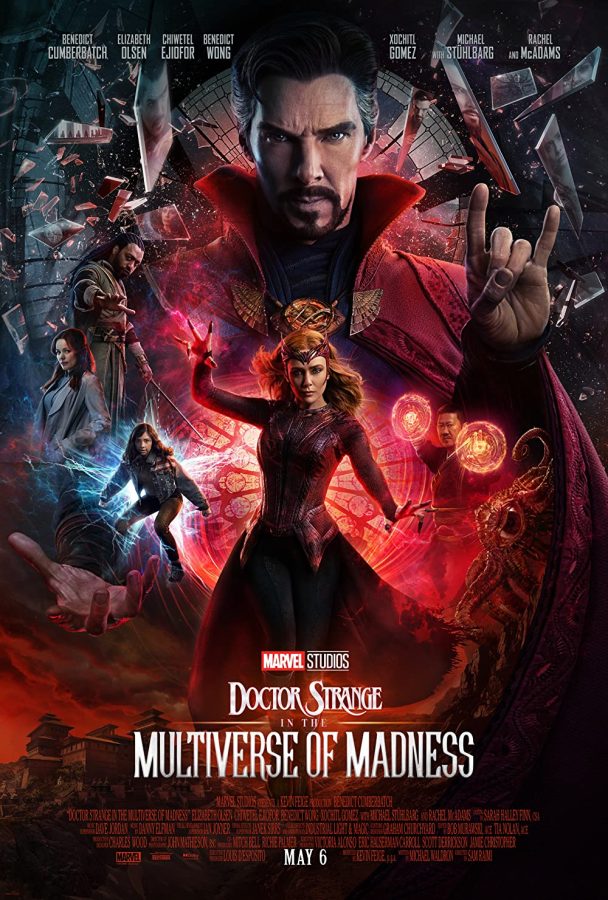‘Doctor Strange in the Multiverse of Madness’ is a muddled attempt at a Marvel masterpiece
May 16, 2022
To honor the concept of a multiverse, seven writers from four different schools decided to collaborate on this review. You can read from the Stampede, the Echo, the North Star, and the Central Times.
“Doctor Strange in the Multiverse of Madness,” directed by Sam Raimi, was released on May 6 exclusively in theaters. It has been widely received as a mediocre sequel to the first “Doctor Strange” film.
As a Marvel fan with a close eye on the current phase of the Marvel Cinematic Universe, or MCU, I can say with confidence that I agree with that assessment.
There have been a total of four phases in the MCU, with each phase marking the beginning of a new major plot point. These phases often come with the introduction of new characters and villains.
Phase four, the current phase of the MCU, is built around the idea of a new generation of heroes and is held to a very high expectation by most Marvel fans.
Throughout this phase, we’ve seen evidence of a new wave of characters and adversaries that push the envelope. These characters ultimately change the way viewers experience the larger universe’s design.
“Multiverse of Madness” continues this trend with the introduction of America Chavez (Xochitl Gomez), a young hero on the cusp of understanding her power and her place in the multiverse.
As “Multiverse of Madness” bounces from one universe to another, some were left feeling disjointed and confused by the flurry of plot points and callbacks to earlier movies. In the end, it was hard to feel a sense of closure after leaving the theater.
For fans without an extensive knowledge of the Marvel universe, I imagine the confusion of this movie must have been beyond intense.
My greatest issue with this movie is the precedent it sets for the future of the MCU. With all of the different universes, gods and super-people, the relatively simple universe I know and love has very quickly transformed into a cluttered mess that’s hard to keep track of without a binder filled with Cornell notes.
Regardless of these setbacks, I was continuously engaged by the strong and vibrant visuals, unique story choices and numerous character cameos.
I was also left with a feeling of inspiration by Raimi’s creativity, which endlessly weaved ingenuity throughout the film.
Particularly, I was very impressed with the musical fight scene between two multiversal versions of Benedict Cumberbatch’s Doctor Strange. In this scene, the two doctors fling musical notes at one another. Accompanied by a well written score by the legendary Danny Elfman, this scene was a testament to the shared vision of the many talented minds behind the movie.
While “Multiverse of Madness” experienced its fair share of imperfection, it is definitely worth a fair shake by anyone with a love for Marvel. Despite my criticism, it is still a worthwhile watch.








